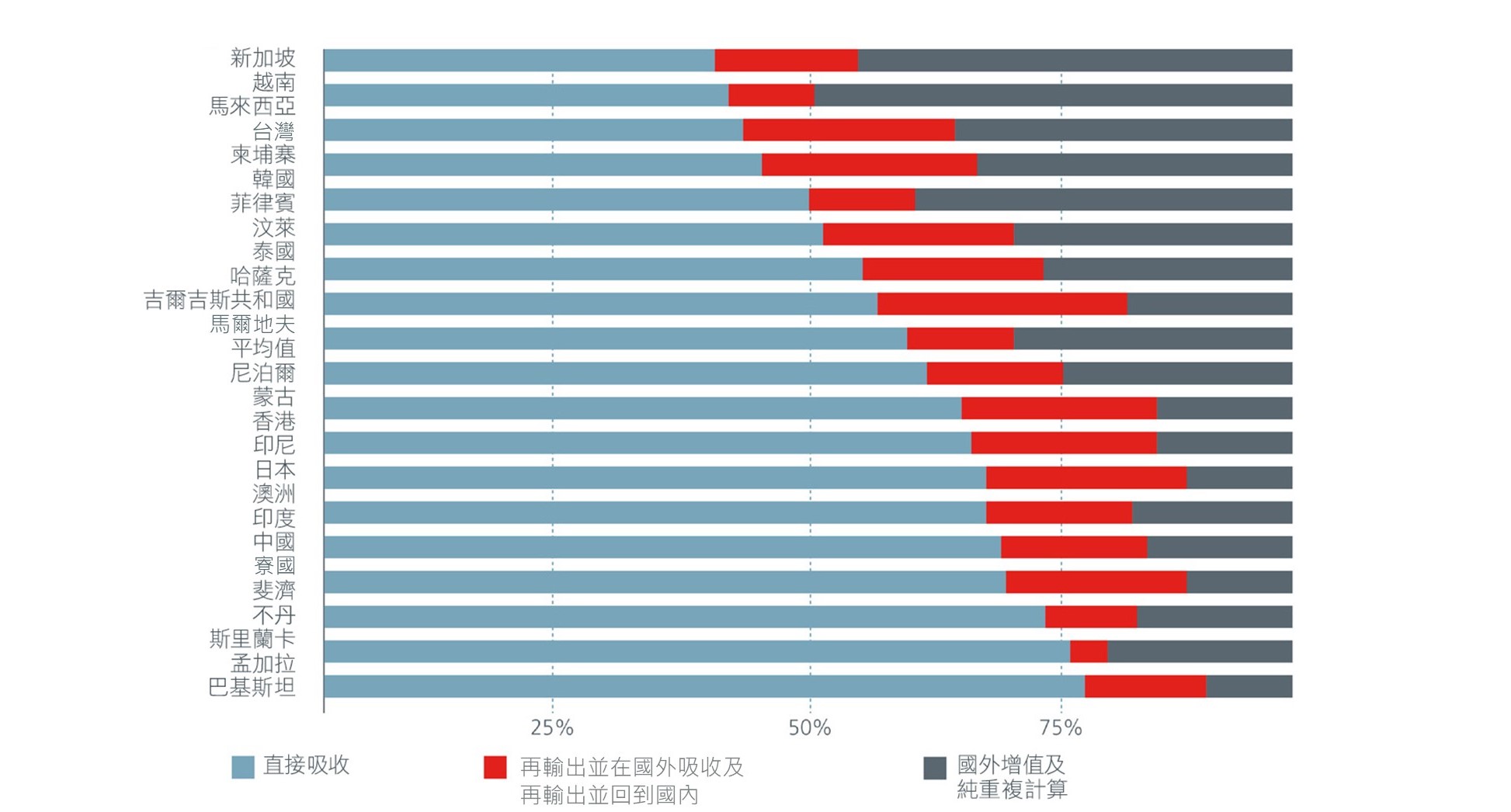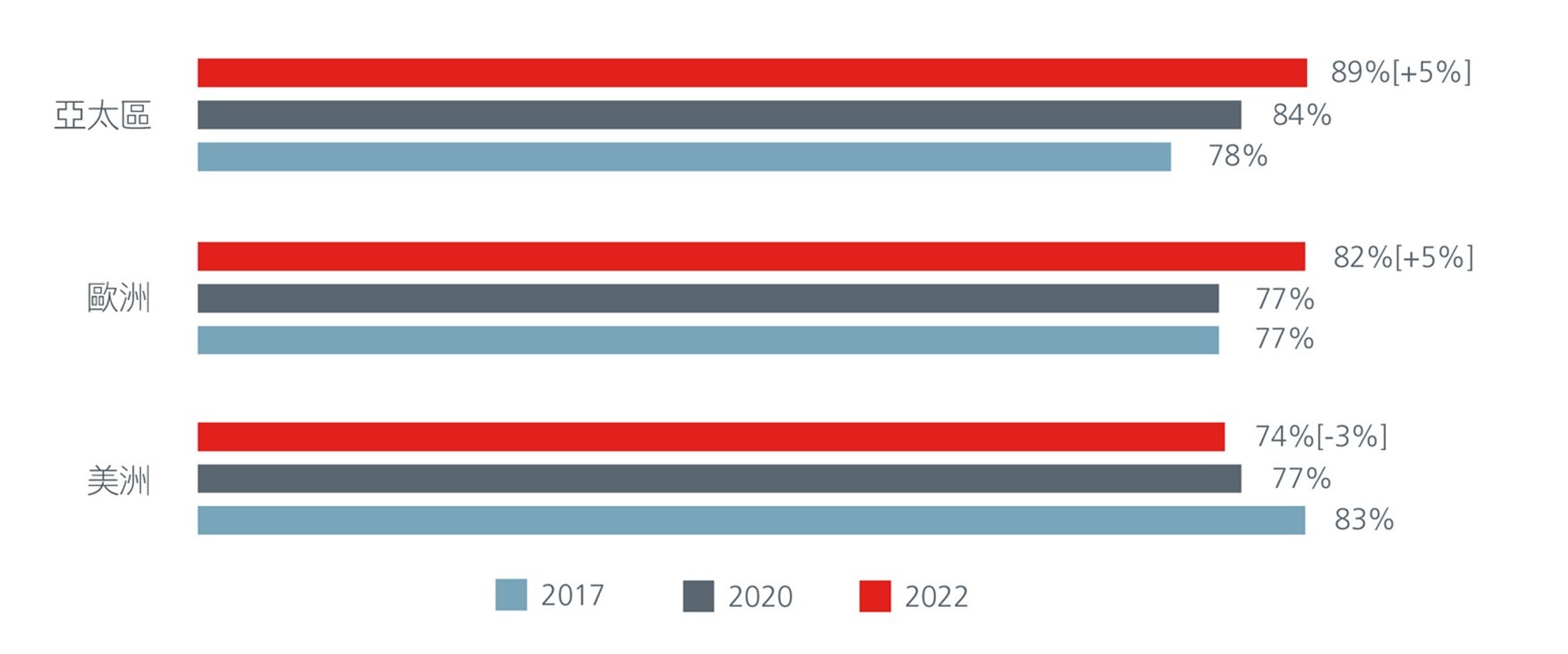自2013年以來,需求模式轉變以及全球新產能的出現引發了全球供應鏈緩慢調整。這些結構性轉變大致上並未引起注意,直至2018年至2019年中美及日韓分別爆發貿易戰,暴露供應鏈形勢的脆弱性;其中半導體產業首當其衝。
不久以後,新冠病毒疫情導致製造及供應嚴重受阻。由於各國在獲取關鍵醫療用品及其他必需品時困難重重,各國政府必須重新評估製造業策略以減少集中風險。希望減少依賴中國(數十年來的世界工廠)的跨國公司開始採用「中國加一」策略。
亞洲受惠國
亞洲國家多年來已成為製造業樞紐,主因包含製造成本較低,同時提供技術及半技術勞動力。地理位置、利多的人口結構、新的製造業產能以及數位化有利多東協集團成為「加一」的製造業樞紐。東協經濟共同體是促進商品、服務、投資及技術勞工自由流動的單一市場及生產基地,該組織自2016年以來為東協的製造業帶來支持。
對東協的外國直接投資﹙FDI﹚亦穩定成長,由2013年的1,200億美元增加至2019年的歷史新高1,740億美元。2021年,受惠於製造業供應鏈多樣化及新的投資,外國直接投資回升至2019年疫情前的水準。製造業方面,電動車、電子產品、生物醫學及製藥獲得最多資金流入。見圖1。大部分外國直接投資流向金融業,主要以銀行業及金融科技活動為基礎,而東協不斷發展的數位經濟亦吸引資訊及通訊產業的投資。
圖1:按產業別劃分的東協外國直接投資流入資金

資料來源:東協秘書處,2022年東協投資報告
東協以外,由於印度政府提出「印度製造」政策,印度亦成為多種產業的潛在製造業樞紐。2021至2022年財政年度,流入製造業的外國直接投資年增76%(210億美元)。印度的手機生產一直是供應鏈轉移主要受惠領域;手機生產在過去5年增加至原來的4倍。蘋果去年開始在印度生產iPhone 14。三星已在印度設廠,是該公司最大的製造設施。預計到2026年財政年度,所有主要手機製造商的國內產能均會倍增。
同時,台灣垂直整合及橫向整合科技供應鏈,尤其是半導體(晶圓代工、後端封裝及測試),是供應鏈重組的主要受惠方。台灣擁有60%至70%的代工產能,超過50%的後端封裝及測試產能,並且在技術組裝產能方面位列全球前五。此外,台灣公司亦即將成為全球雲端及超大規模數據中心連接器、印刷電路板、蒸氣零件等組件的主要供應商。
中國重要性仍存在
儘管亞洲不斷出現新的製造業中心,但中國不太可能失去世界工廠的地位。保留中國製造基地的原因眾多;中國龐大及不斷成長的市場、出色的基礎建設及運輸設施,以及供應商網路是其關鍵的競爭優勢。複製中國不同產業的綜合工廠模式是相當艱難的工作。公司必須評估不同監管框架、海關規定以及中國境外供應商的可用性及可靠程度。
同時,中國一直在製造業價值鏈升級,生產更高等級的設備及工業產品,例如應用於消費電子、航空及汽車產業最終產品的零件/半成品。見圖2。對科技、大數據、機械科技及人工智慧的巨額投資正推動中國的價值鏈升級。中國在不斷成長的再生能源產業亦具備優勢,在太陽能板的關鍵製造階段佔極高的市佔率。1
圖2:中國的增值製造業

資料來源︰世界銀行,2022年。
亞洲在全球價值鏈的作用
全球價值鏈約佔現今全球貿易的50%。2 全球價值鏈是指在不同國家進行的多個生產階段,各階段均會增加價值。參與全球價值鏈使各國能夠運用其比較優勢。全球價值鏈一直是亞洲等多個新興市場的成長、就業及生活水準的動力來源。
隨著全球價值鏈更加根深蒂固,亞洲作為重要製造業樞紐的地位有所上升。全球價值鏈整合程度最高的經濟體是新加坡、越南、馬來西亞及台灣,這些經濟體在全球價值鏈的參與率達50%及以上。3見圖3。新加坡及越南進口超過40%的輸入品,然後透過增值鏈將貨品再輸出。另一方面,印尼、日本及中國等大型經濟體能夠在國內採購大部分輸入品。
除了個別特點及優勢外,政策亦決定了國家參與全球價值鏈的程度,東協與中國、日本、韓國、澳洲及紐西蘭簽訂的區域全面經濟夥伴關係﹙RCEP﹚自由貿易協定於2022年1月生效。RCEP將促進東協與其他亞洲市場之間製成品/輸入品及投資的流動,並降低其流動成本。有了此協定,跨國公司能在亞洲不同國家建立供應鏈,以便發揮該區的差異化優勢而獲益。
圖3:2020年亞太區出口的增值類別

資料來源:亞洲開發銀行根據2021年多區投入產出資料庫計算的估計數字。
建立抗禦力是關鍵所在
儘管在新冠病毒疫情衝擊後,各國出現了全球價值鏈回流的聲音,但世界銀行依然認為,全球價值鏈在緩衝經濟衝擊方面發揮重要作用。當中的關鍵是要加強供應鏈的抗禦力,同時繼續透過各國的比較優勢提高效益。一項針對在20多個開發中國家營運的跨國公司聯屬公司的調查4顯示,約60%聯屬公司已運用數位科技來優化產能及改善物流。
新冠病毒疫情促使公司加速應用科技,並凸顯出透過智慧物流提高交貨速度的重要性。隨著時間推移,供應鏈變得日益廣泛及複雜,從而降低透明度,使企業更容易受到衝擊。安侯建業的報告指出,投資於雲端數位轉型策略是供應鏈在2022年的主要趨勢。5未來的供應鏈及智慧工廠必須透過收集準確的雲端數據來提供點對點的透明度,以支持即時決策,回應急速變化的客戶偏好。
永續發展不可或缺
全球供應鏈約產生全球碳排放的80%,全球五分之一的碳排放產生自製造業。供應鏈產生的排放平均較營運產生的排放高11倍以上。6由於亞太區較其他地區更容易受到氣候變化的影響,監管機關及主要股東可能會要求當地企業採取更多措施監控及減少範圍3排放7。
由於數據不足且缺乏一致性,我們難以準確計算範圍3排放。儘管如此,亞太區公司日漸把永續發展整合至其策略之中。安侯建業的調查顯示,亞洲區的永續發展報告率正在上升。
圖4:按地區劃分的永續發展報告率

資料來源:安侯建業永續發展報告調查,2022年9月。調查涵蓋58個國家的5,800間公司。選擇的公司為收入排名前100的公司。
把握機會的途徑
透過各國競爭產業的主要參與者,投資人能發掘整個亞洲區不斷成長的供應鏈投資機會。例如,馬來西亞的電機及電子業將因發達的半導體供應鏈而受惠;該國在全球晶片組裝、測試及封裝領域佔13%市佔率。同時,對越南電子、紡織及漁業等產業的投資正在增加。新加坡的銀行及金融業正從新的融資間接受惠,而高附加價值製造業亦將直接受惠。
泰國方面,在發達的供應鏈支持下,汽車業將受惠於轉型至電動車的趨勢。印尼亦將把握電動車轉型的機會,因該國是世上鎳及銅存量最高的國家之一,而鎳及銅是生產電動車鋰電池組的關鍵原物料。
作者:
Anand Gupta,瀚亞新加坡股票投資組合經理
Rebecca Lin,瀚亞台灣投資主管
Nguyen Thi Bich Thao,瀚亞越南股票主管
Liew Wei Han,瀚亞馬來西亞科技分析師
這是我們的四篇專家系列文章的第三篇,我們在這些文章提供有關亞洲市場以及亞洲消費者、供應鏈及資源的投資觀點。